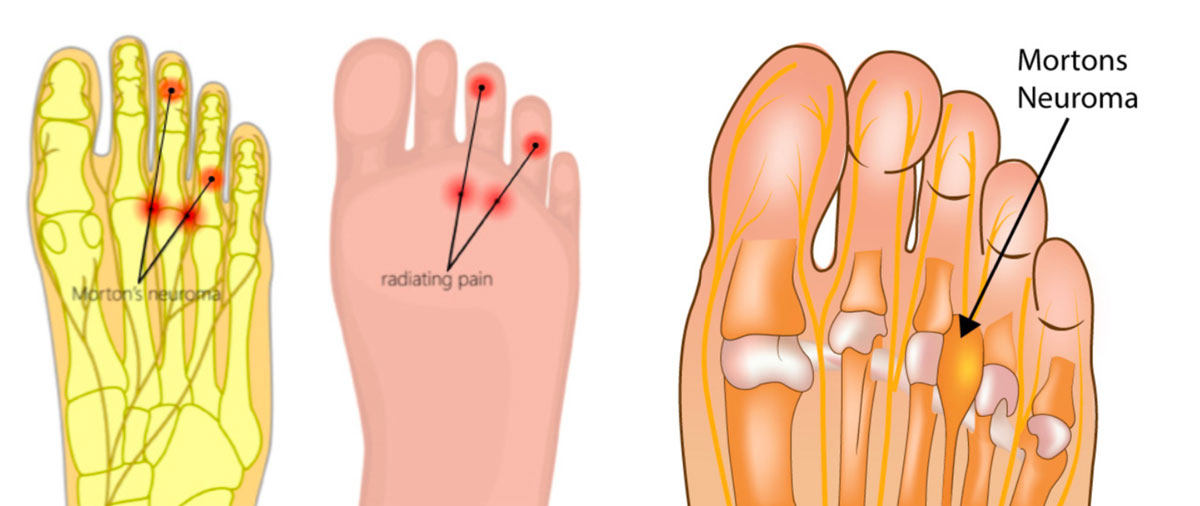A Morton’s neuroma is a condition where the nerves running between the metatarsal bones in the foot can become thickened in response to consistent pressure or trauma. This can generate symptoms of numbness, tingling and burning in the ball of the foot which may radiate up through the toes. Neuroma’s can develop in any of the intermetatarsal spaces but most commonly develop between the 3rd and 4th toes.

The most common culprit for a neuroma developing is wearing tight and narrow shoes. It is important that when selecting shoes that we choose shoes that have adequate width and depth which allows for wiggle room so the toes are able to splay. A simple trick is to take out the innersole of the shoe and stand on it barefoot. If there is any part of the foot that is overhanging the edge of the innersole, the shoe is too narrow.
Other risk factors and biomechanical for developing neuroma’s include:
- Foot deformities such as bunions, clawed toes, curly toes.
- Reduced range of motion through joints the ankle or metatarsophalangeal joints of the foot.
- High heels, dress shoes or other shoes with a narrow toe box.
- Certain activities such as snowboarding, skiing, athletics, soccer, basketball and football.
- Foot function: how you walk.
- Repetitive trauma to the foot.
- Foot type: high arched feet or flat feet.
- Increased BMI.
- Occupation.
Treatments for Morton’s neuroma includes:
- Footwear changes or modifications to increase shoe width.
- Padding to offload the irritated area.
- Metatarsal domes.
- Taping to redistribute pressure and put foot in a more functional position.
- Mobilisation of foot joints (FMT therapy)
- Toe spreaders.
- Intrinsic foot muscle strengthening to encourage better foot function and alignment.
- Foot orthoses
- Shockwave
- Local anaesthetic injections.
- Referral for cortisone injections.
- Referral for nerve ablation or surgical excision if not responding to conservative treatments.
It is important to seek advice from a podiatrist if you think you have a neuroma. This condition will not get better on its own if contributing biomechanical factors are not addressed.
